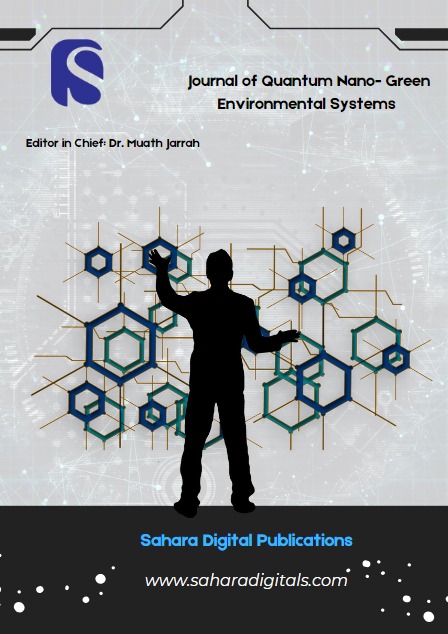Title: DEEP LEARNING APPROACHES FOR ENGINEERING ADVANCED NANOSTRUCTURES TARGETING EFFICIENT ENVIRONMENTAL REMEDIATION AND POLLUTION CONTROL

Journal of Quantum Nano- Green Environmental Systems (QNGES)
© by QNGES - Sahara Digital Publications
ISSN: 3079-6210
Volume 01, Issue 01
Year of Publication : 2025
Page: [55 - 64]
Authors :
Naseer Kim and Latif Moradi
Address :
Computer Engineering and Information Technology Department, Razi University, Kermanshah, Iran
Department of Computer Science, Knowledge University, University Park, Kirkuk Road, Erbil 446015, Iraq
Abstract :
The extraction of innovative substances for effective cleanup is essential since contamination of the environment is an important issue on a worldwide scale. In this research, we look at how Graph Attention Networks (GATs), a kind of deep learning system, may be used to develop and maximize nanotechnology with the ultimate objective of economic pollution cleanup. Essential characteristics for ecological interaction modelling are included in the information set, including toughness, turbidity, organic carbon, chloramines, sulfate, pH, solids, and chloramines. The nanotechnology will remove pollutants; the recommended strategy uses GATs to describe the intricate interactions between multiple environmental variables. Everyone built a graph to show the relationship between the parameters and the individual samples, with the edges representing the relationship between them. Significant findings show that GATs can detect essential characteristics that affect cleanup performance, including carbon dioxide concentrations and sulfate material. Nanotechnologies with increased adsorbed and enzymatic capabilities were designed thanks to the machine learning model's excellent accuracy in forecasting. To sum up, this method offers a potent instrument for directing nanotechnologies' growth, enhancing efficiency in environmental cleanup and pollution management.
Keywords :
Graph Attention Networks, nanotechnology, pollution cleanup, environmental modelling, machine learning
